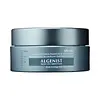What's inside
What's inside
 Key Ingredients
Key Ingredients

 Benefits
Benefits

 Concerns
Concerns

 Ingredients Side-by-side
Ingredients Side-by-side

Water
Skin ConditioningSqualane
EmollientGlycerin
HumectantCaprylic/Capric Triglyceride
MaskingIsoamyl Laurate
EmollientButyrospermum Parkii Butter
Skin ConditioningSorbitan Olivate
EmulsifyingCetearyl Olivate
Ceramide NP
Skin ConditioningJojoba Esters
EmollientSodium Hyaluronate
HumectantEuterpe Oleracea Sterols
Skin ConditioningLinoleic Acid
CleansingOleic Acid
EmollientLinolenic Acid
CleansingEthyl Linoleate
EmollientTocopherol
AntioxidantIsoamyl Cocoate
Cetyl Palmitate
EmollientSorbitan Palmitate
EmulsifyingCetearyl Alcohol
EmollientEthylhexylglycerin
Skin ConditioningCarbomer
Emulsion StabilisingSodium Hydroxide
BufferingPhenoxyethanol
PreservativeSodium Gluconate
Skin ConditioningWater, Squalane, Glycerin, Caprylic/Capric Triglyceride, Isoamyl Laurate, Butyrospermum Parkii Butter, Sorbitan Olivate, Cetearyl Olivate, Ceramide NP, Jojoba Esters, Sodium Hyaluronate, Euterpe Oleracea Sterols, Linoleic Acid, Oleic Acid, Linolenic Acid, Ethyl Linoleate, Tocopherol, Isoamyl Cocoate, Cetyl Palmitate, Sorbitan Palmitate, Cetearyl Alcohol, Ethylhexylglycerin, Carbomer, Sodium Hydroxide, Phenoxyethanol, Sodium Gluconate
Water
Skin ConditioningButylene Glycol
HumectantDimethicone
EmollientGlycerin
HumectantIsohexadecane
EmollientAmmonium Acryloyldimethyltaurate/Vp Copolymer
Algae Exopolysaccharides
HumectantPorphyridium Cruentum Extract
Skin ConditioningRhizobian Gum
Sea Water
HumectantEnteromorpha Compressa Extract
Skin ProtectingCitrullus Lanatus Fruit Extract
Skin ConditioningLens Esculenta Fruit Extract
Skin ConditioningPyrus Malus Fruit Extract
Skin ConditioningBeta-Glucan
Skin Conditioning1,2-Hexanediol
Skin ConditioningMagnesium Aspartate
Skin ConditioningZinc Gluconate
Skin ConditioningChondrus Crispus Extract
Skin ConditioningCopper Gluconate
Skin ConditioningSodium Hyaluronate Crosspolymer
HumectantSodium Lactate
BufferingDisodium EDTA
Sodium PCA
HumectantSodium Hydroxide
BufferingPropanediol
SolventEthylhexylglycerin
Skin ConditioningSodium Benzoate
MaskingPotassium Sorbate
PreservativePentylene Glycol
Skin ConditioningCaprylyl Glycol
EmollientChlorphenesin
AntimicrobialPhenoxyethanol
PreservativeParfum
MaskingBenzyl Benzoate
AntimicrobialButylphenyl Methylpropional
PerfumingHexyl Cinnamal
PerfumingHydroxyisohexyl 3-Cyclohexene Carboxaldehyde
MaskingCI 42090
Cosmetic ColorantWater, Butylene Glycol, Dimethicone, Glycerin, Isohexadecane, Ammonium Acryloyldimethyltaurate/Vp Copolymer, Algae Exopolysaccharides, Porphyridium Cruentum Extract, Rhizobian Gum, Sea Water, Enteromorpha Compressa Extract, Citrullus Lanatus Fruit Extract, Lens Esculenta Fruit Extract, Pyrus Malus Fruit Extract, Beta-Glucan, 1,2-Hexanediol, Magnesium Aspartate, Zinc Gluconate, Chondrus Crispus Extract, Copper Gluconate, Sodium Hyaluronate Crosspolymer, Sodium Lactate, Disodium EDTA, Sodium PCA, Sodium Hydroxide, Propanediol, Ethylhexylglycerin, Sodium Benzoate, Potassium Sorbate, Pentylene Glycol, Caprylyl Glycol, Chlorphenesin, Phenoxyethanol, Parfum, Benzyl Benzoate, Butylphenyl Methylpropional, Hexyl Cinnamal, Hydroxyisohexyl 3-Cyclohexene Carboxaldehyde, CI 42090
 Reviews
Reviews

Ingredients Explained
These ingredients are found in both products.
Ingredients higher up in an ingredient list are typically present in a larger amount.
Ethylhexylglycerin (we can't pronounce this either) is commonly used as a preservative and skin softener. It is derived from glyceryl.
You might see Ethylhexylglycerin often paired with other preservatives such as phenoxyethanol. Ethylhexylglycerin has been found to increase the effectiveness of these other preservatives.
Glycerin is already naturally found in your skin. It helps moisturize and protect your skin.
A study from 2016 found glycerin to be more effective as a humectant than AHAs and hyaluronic acid.
As a humectant, it helps the skin stay hydrated by pulling moisture to your skin. The low molecular weight of glycerin allows it to pull moisture into the deeper layers of your skin.
Hydrated skin improves your skin barrier; Your skin barrier helps protect against irritants and bacteria.
Glycerin has also been found to have antimicrobial and antiviral properties. Due to these properties, glycerin is often used in wound and burn treatments.
In cosmetics, glycerin is usually derived from plants such as soybean or palm. However, it can also be sourced from animals, such as tallow or animal fat.
This ingredient is organic, colorless, odorless, and non-toxic.
Glycerin is the name for this ingredient in American English. British English uses Glycerol/Glycerine.
Learn more about GlycerinPhenoxyethanol is a preservative that has germicide, antimicrobial, and aromatic properties. Studies show that phenoxyethanol can prevent microbial growth. By itself, it has a scent that is similar to that of a rose.
It's often used in formulations along with Caprylyl Glycol to preserve the shelf life of products.
Sodium Hydroxide is also known as lye or caustic soda. It is used to adjust the pH of products; many ingredients require a specific pH to be effective.
In small amounts, sodium hydroxide is considered safe to use. However, large amounts may cause chemical burns due to its high alkaline.
Your skin has a natural pH and acid mantle. This acid mantle helps prevent harmful bacteria from breaking through. The acid mantle also helps keep your skin hydrated.
"Alkaline" refers to a high pH level. A low pH level would be considered acidic.
Learn more about Sodium HydroxideWater. It's the most common cosmetic ingredient of all. You'll usually see it at the top of ingredient lists, meaning that it makes up the largest part of the product.
So why is it so popular? Water most often acts as a solvent - this means that it helps dissolve other ingredients into the formulation.
You'll also recognize water as that liquid we all need to stay alive. If you see this, drink a glass of water. Stay hydrated!
Learn more about Water